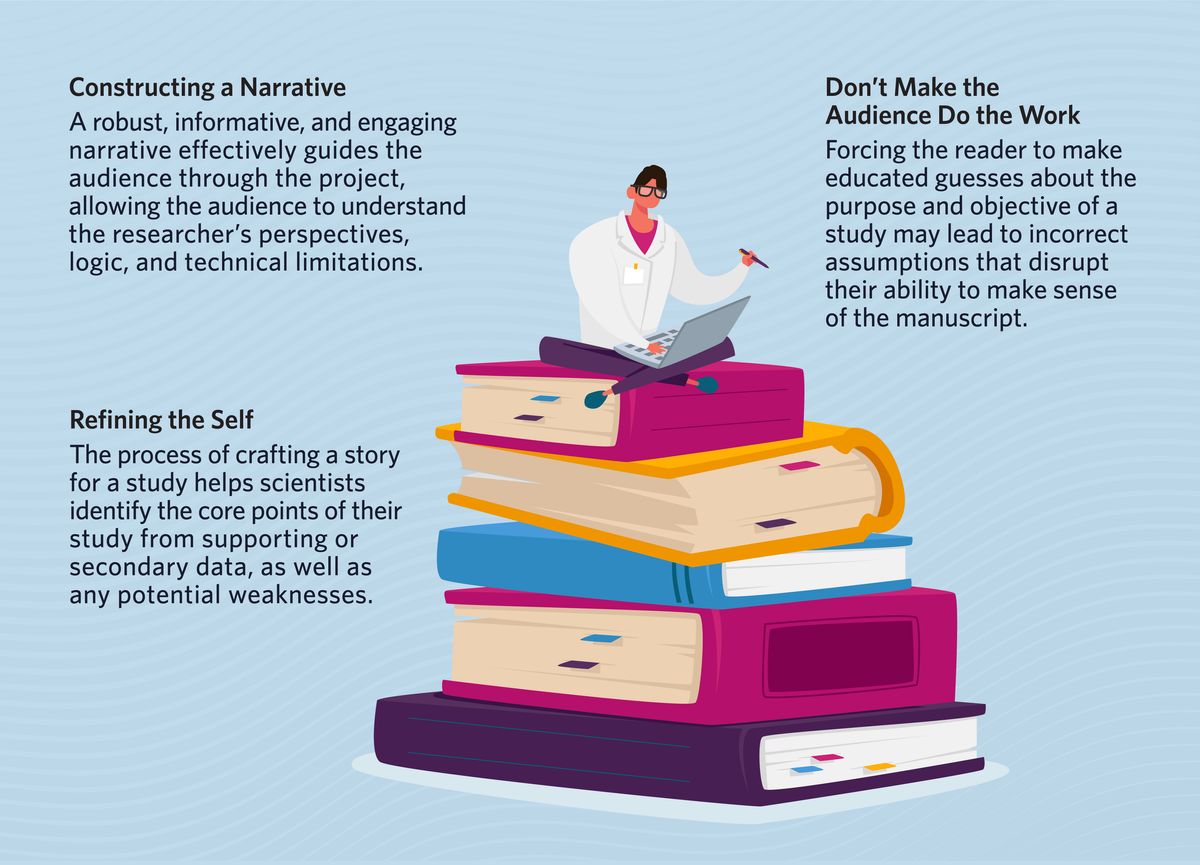
Scientific communication is often overlooked when training aspiring new scientists. After all, science has a reputation for dealing in data rather than opinions or arguments. However, as the scientific landscape continues along through the 21st century and beyond, scientists are realizing the critical importance of not only having good studies and good data, but also being able to communicate those findings effectively—both to in-field specialists and the scientific community at large.
The Importance of Storytelling
For many, a manuscript is the sum of its figures, images, data points, plots, and statistics, with the words simply there to link these elements together or to reiterate their contents. But no single manuscript can express the full breadth of a given topic, or even contain all of the data, discussion, and reason behind a single study. This reality has only become starker as projects become more multidisciplinary and studies grow larger, while journal word limits stay the same. Researchers now, more than ever, need to pick and choose the parts and findings that they feel are the most important, and arrange them in a coherent and logical manner.
To put it plainly, scientists need to be able to tell a story to convey the full meaning of their work.
Constructing a Narrative
The main thing about constructing a robust, informative, and engaging narrative is to effectively direct and guide the audience through the project from start to finish. Too many manuscripts lurch from one experiment to the next, rattling off data points as if they were a list without relaying how experiments and experimental groups relate to one another. It is important to describe deliberations, options, and decision-making processes when moving from one part of the study to the next. Doing this allows the audience to understand the researcher’s perspectives, logic, and technical limitations.
For example, there can be many reasons for a researcher to perform western blotting. They can employ the technique to investigate the presence or absence of target proteins, to confirm gene-level results, to examine post-translational modifications, to track shifts in protein expression over time or after treatment, or to serve as a technical control, just to name a few. Without elaboration, the audience is left on their own to determine why the researcher chose a given experiment and how it fit into the study as a whole.
Don’t Make the Audience Do the Work

When it comes to determining the purpose and objective of a study, shifting the onus onto the audience is a major problem. Because the audience did not conduct the study, there is no possible way for them to have all of the information that the authors do. As such, when the audience is forced to make educated guesses, they may make incorrect assumptions. This not only disrupts their ability to both read and make sense of the manuscript, but can also cause them to assume flaws or inconsistencies that are either not actually present or were addressed. This can serve as a deathblow for manuscripts undergoing academic review, an unforgiving process with limited opportunities for clarification or discussion.
Just as the audience should receive enough information to avoid guesswork on their part, the author must also take care to not make assumptions about the audience’s background or expertise with the field or topic of the manuscript. Many things can be omitted or truncated for the sake of brevity, but anything out of the ordinary, as well as anything that sets the study apart from other studies, needs to not only be mentioned, but emphasized. Ideally, researchers should find some way to do this first in the manuscript text, even if the novel or unique aspect lies in the methodology. With so many journals either relegating the Materials and Methods section either to the end of the manuscript or hiding it in a supplement, authors should do their best to not make their readers jump from place to place when reading, whether it’s from a figure to the text or from the results to the methods.
Refining the Self
Finally, the process of crafting a story for their study helps scientists too. The process helps them identify and separate the core points of their study from supporting or secondary data. It also potentially identifies weaknesses that need to be supported or clarified prior to manuscript submission. Ultimately, this process helps the scientist’s passion for their work shine through, and helps the text convey a layer of excitement and belief in the significance of their work.
Looking to hone your scientific writing skills or want to share your work with a broader audience? Check out The Scientist’s writing contest What’s Your Story? Looking for some help putting together a manuscript, a figure, a poster, or anything else? Scientific Services may have the professional help that you’re looking for.
